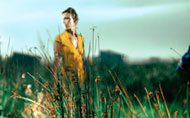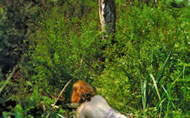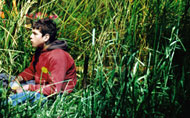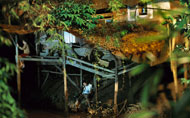


|

|

|
 |
 |
Click thumbnails to see full-sized images.

|

|
Chaskielberg began his career as a politically-bent photojournalist, but soon realized he wanted to showcase images not possible within the media. After a stint as a musician, he returned to photography, studying at the National Film Institute and later making documentaries for television. In 2008, he was invited to participate in the National Geographic "All Roads" photography and traveling exhibition program and the Museum of Latin American Art's awards and auction in Laguna Beach, CA. Chaskielberg has received numerous awards, including Talent Latent as a part of Spain's Scan 09 festival and the Currículum Cero prize at Argentina's Ruth Benzacar Gallery. In 2009, Chaskielberg was the recipient of the Burn online magazine Emerging Photographer Grant and also named one of PDN magazine's 30 new and emerging photographers to watch.
– Leslie K. Brown

With my photographs, I create imaginary scenarios with real people and situations. I explore the limits of documentary photography, using technical processes to transform the natural perception of light, color, and space.
I am working on a long-term project about the Paraná River Delta photographed at night. I am interested in the poetical and visual power of water, and the relationship between people and the environment. I think that the health of this resource is a worldwide issue today. The Paraná River runs over a course of 1,600 miles through Brazil, Paraguay, and Argentina and supplies water for more than 100 million people. It carries millions of tons of suspended sediments, which makes the delta advance numerous meters over the Río de la Plata river every year.
The Lower Delta was the site of the first modern settlements in the Paraná basin and this work focuses on the communities within these islands. Some of the islanders work in the tree-felling season, others fish or grow fruit, but most are isolated without any kind of communication except the River. The tides control the life of the islanders: with the high tide, they can travel through the small rivers and islands to pick up previously felled wood. With the low tide, they can collect rushes at the shore. In addition to its many electrical dams, the River's tides change with the sea tides, the wind, and the moon.
Much like a script in my head, I think of my pictures as slides of unfinished stories. The photographs are carefully planned after days of observation and then come into being with the slow process of a large format camera. Using only the light of the moon and flashlights, it can take from five to ten minutes until this thick darkness divulges what is secret.
My intention is to use photography to occupy a border between document and fiction and imbue the islanders with a strange timelessness. Photography can transform reality and produce a magical view of people and of life.
– Alejandro Chaskielberg
En Foco
www.chaskielberg.com


















